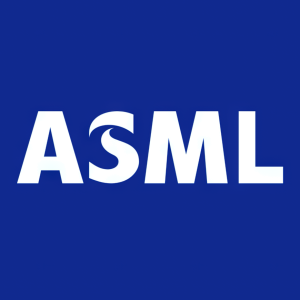ASML reports transactions under its current share buyback program
- None.
- None.
Insights
Share buyback programs are a significant market activity, as they can indicate a company's perspective on its own valuation. By repurchasing its shares, a company like ASML can potentially signal to the market that it believes its stock is undervalued. This activity can also improve financial metrics such as earnings per share (EPS) by reducing the number of shares outstanding, which may make the stock more attractive to investors.
Looking at ASML's recent transactions, the company has been consistent in its buyback approach, suggesting a strategic effort to manage its capital structure. While the repurchase values differ each day, reflecting the market's fluctuating prices, the overall commitment to the program remains evident. It's important for stakeholders to monitor such buybacks as they may reflect management's confidence in the company's future performance and strategic direction.
When analyzing the financial implications of ASML's share buyback, it's crucial to consider the impact on the company's cash reserves. The total repurchase value over the reported days amounts to a substantial investment. This could indicate strong cash flow generation by ASML, which allows for such capital return activities without compromising operational funding.
Investors often view share buybacks as a positive move, as it can lead to a short-term increase in share price. However, it is also essential to assess whether these buybacks are being financed by debt, which could lead to a different evaluation of the company's financial health. In the long term, the effectiveness of buybacks in delivering shareholder value must be weighed against other potential uses of capital, such as investment in R&D or strategic acquisitions.
From an economic perspective, ASML's buyback program must be contextualized within the broader semiconductor industry and macroeconomic environment. The semiconductor sector is known for its cyclical nature and buybacks may serve as a counter-cyclical measure to stabilize stock prices during periods of volatility. Additionally, in a low-interest-rate environment, companies may favor buybacks over other investments due to the relatively lower cost of capital.
However, it's important to consider that buybacks can also be a response to a lack of viable investment opportunities, which could be a sign of maturation in the semiconductor industry or a cautious stance due to macroeconomic uncertainties. The ongoing geopolitical tensions and supply chain issues are factors that can influence a company's decision-making process regarding capital allocation.
ASML reports transactions under its current share buyback program
VELDHOVEN, the Netherlands – ASML Holding N.V. (ASML) reports the following transactions, conducted under ASML's current share buyback program.
| Date | Total repurchased shares | Weighted average price | Total repurchased value |
| 12-Feb-24 | 10,046 | | 8,770,457 |
| 13-Feb-24 | 17,628 | | 14,849,010 |
| 14-Feb-24 | 9,759 | | 8,316,960 |
| 15-Feb-24 | 9,197 | | 7,915,733 |
| 16-Feb-24 | 7,654 | | 6,651,055 |
ASML’s current share buyback program was announced on 10 November 2022, and details are available on our website at https://www.asml.com/en/news/share-buybacks
This regular update of the transactions conducted under the buyback program is to be made public under the Market Abuse Regulation (Nr. 596/2014).
| Media Relations Contacts | Investor Relations Contacts |
| Monique Mols, phone +31 6 528 444 18 | Skip Miller, phone +1 480 235 0934 |
| Marcel Kemp, phone +31 40 268 6494 | |
| Peter Cheang, phone +886 3 659 6771 |








